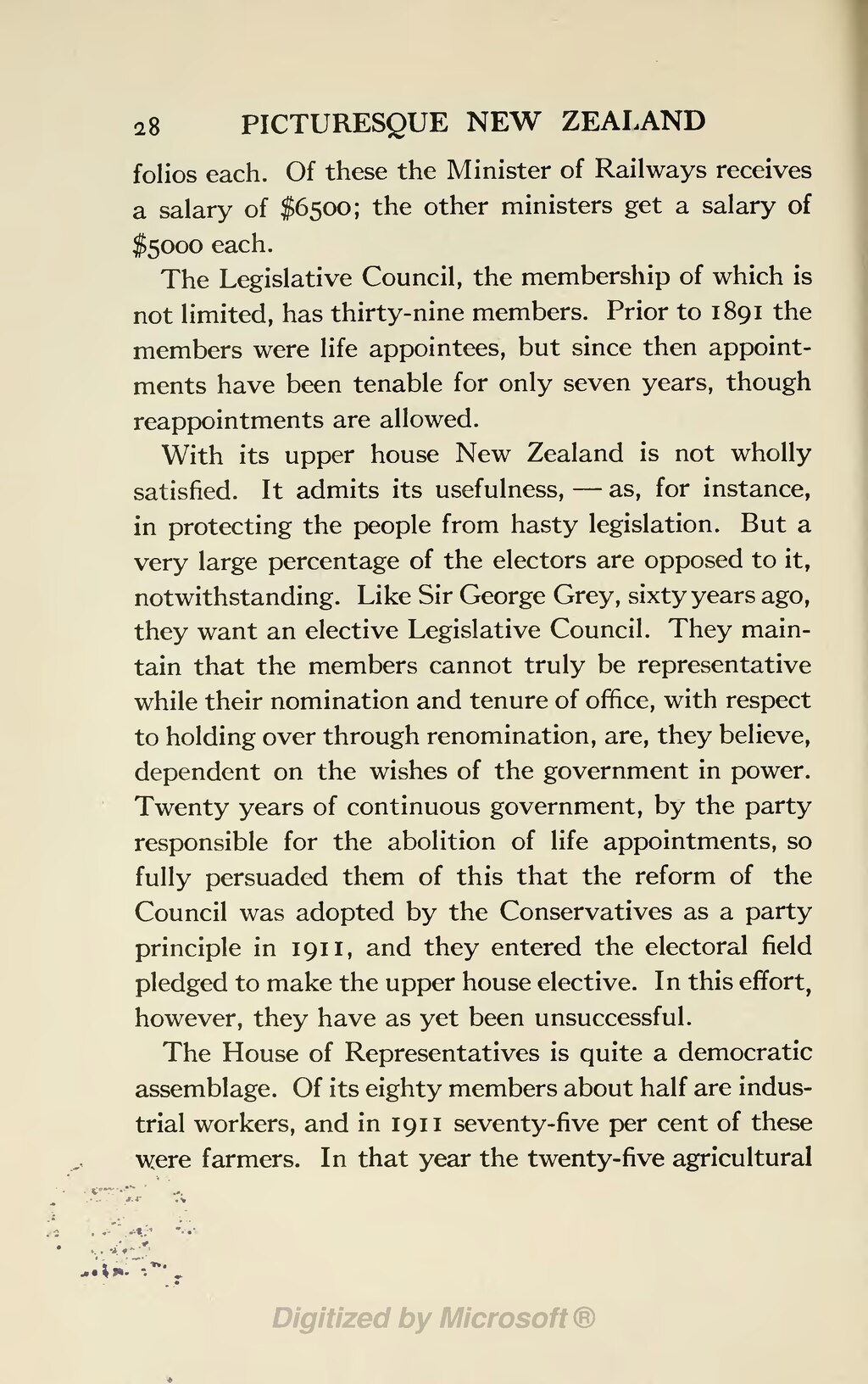folios each. Of these the Minister of Railways receives a salary of $6500; the other ministers get a salary of $5000 each.
The Legislative Council, the membership of which is not limited, has thirty-nine members. Prior to 1891 the members were life appointees, but since then appointments have been tenable for only seven years, though reappointments are allowed.
With its upper house New Zealand is not wholly satisfied. It admits its usefulness,—as, for instance, in protecting the people from hasty legislation. But a very large percentage of the electors are opposed to it, notwithstanding. Like Sir George Grey, sixty years ago, they want an elective Legislative Council. They maintain that the members cannot truly be representative while their nomination and tenure of office, with respect to holding over through renomination, are, they believe, dependent on the wishes of the government in power. Twenty years of continuous government, by the party responsible for the abolition of life appointments, so fully persuaded them of this that the reform of the Council was adopted by the Conservatives as a party principle in 1911, and they entered the electoral field pledged to make the upper house elective. In this effort, however, they have as yet been unsuccessful.
The House of Representatives is quite a democratic assemblage. Of its eighty members about half are industrial workers, and in 1911 seventy-five per cent of these were farmers. In that year the twenty-five agricultural
